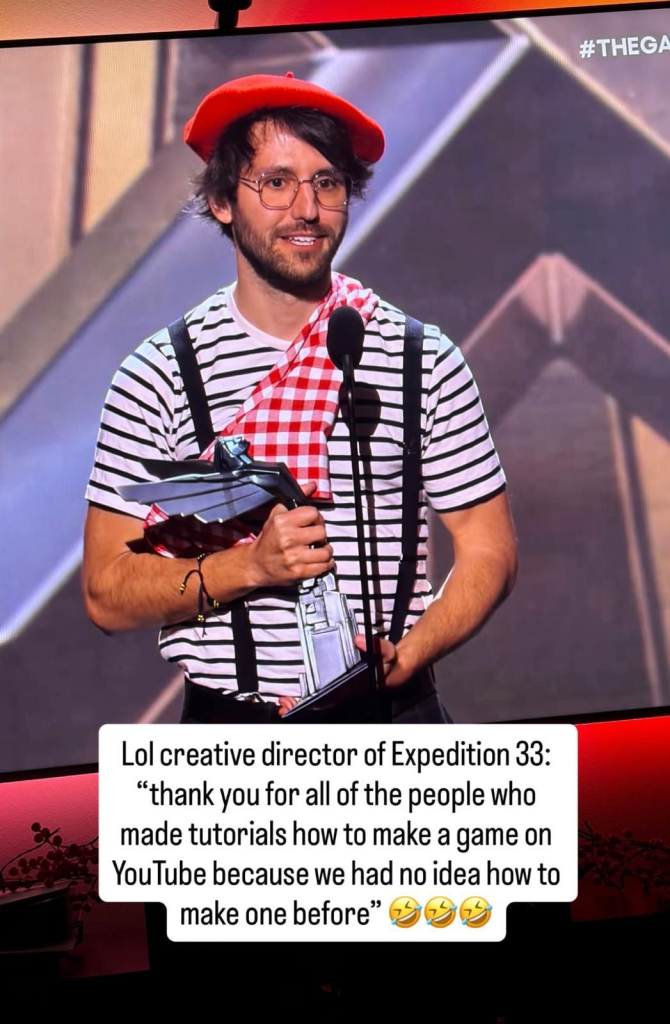The story of Clair Obscur: Expedition 33 is my favorite tale of 2025. Every successful game is a little miracle, but this one has been very well documented also by the mainstream journalism. As they say, the luck arrives while you’re working hard and that’s the case for this game.
The initial spark comes from a single guy working afterwork on Unreal Engine just because the program was fun to use. Then he contacted with a colleague to get extra guidance, he looks for connection and thanks to that he manages to stay 1-2 years working extra hours to find a possible formula for his game. Effort and connection, these things are both very important to me. In fact, it’s extremely hard to work solo on a project over a long period of time after your normal day job.
The third person is a business guy, ex university colleague, to focus on investments. Again, the founder of Sandfall Interactive looks to make business from the start, and that’s something very few people do.
And then there is the luck: they post on Reddit and other platforms to manage to find artists and voice over actors to sell better the idea (again, sell sell sell). And they have the luck to find the right people at the right time. After many pitches that went wrong, they found their way. And then everybody knows how the story ended, big success.
To conclude today’s post, let’s talk about hope, which is the true fun part of making games (or better, making everything in general). Everybody dreams of getting prizes, but the real fun is in MAKING games, especially for us designers and developers. It’s a struggle, includes lots of highs and lows, and also financial difficulties often. But we still do it because of our passion and talent. That’s exactly the important part, not the outcome. The fact of being together with other people and creating something we believe will be awesome, that’s what we truly strive for. The outcome is a little miracle, and great to have it, but it’s not the important part.

